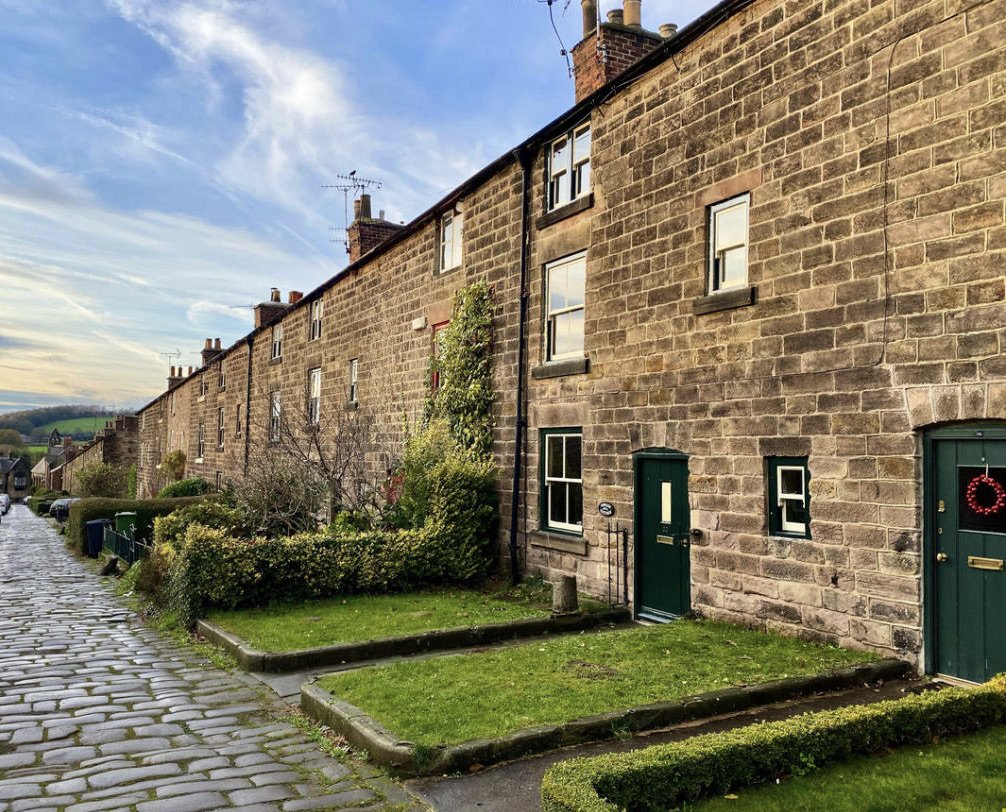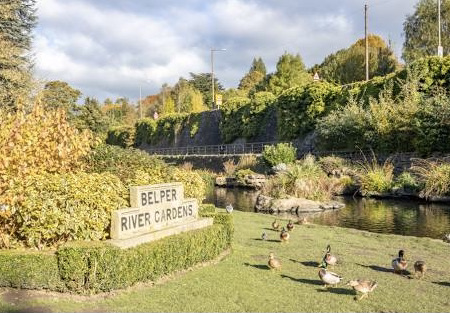June 2022 Monthly Meeting Report
Andrew Smart gave us a very interesting talk about the history of Nottingham Theatres and some of the famous actors who have played there. Over the years he has reviewed many acts, plays and pantomimes in and around Nottingham and his presentation included numerous famous names that we all recognise from the past.
He reminded us of the early days of the old Playhouse and Theatre Royal plus the old Empire theatre which unfortunately disappeared.
A fascinating talk. Margaret Naylor
May 2022 Monthly Meeting Report
A chance discovery of a book – an art teachers memoir of life in an English girl’s school found in the back of a cupboard – led to some amazing and quite unique revelations about life on the Home Front during the Second World War. Mary Smith former head of Maidstone Grammar School for Girls did just that and could hardly contain her enthusiasm in telling us about it. The year was 2013 when the discovery was made. It contained the delightful drawings by Helen King art teacher at the school of life as she experienced throughout the length of the war and what a life they led. The main discovery were the Tunnels dug out beneath the grounds of the school where school life was carried out. Lessons took place with girls sitting in long rows on benches – extremely difficult teaching and learning conditions by today’s standards, but they coped. When the teacher wished to get to the far end the instruction went up “knees left” so the manoeuvre could be achieved. The drawings showed a variety of school scenes – girls in gas masks playing netball, girls running everywhere – when the syrens went you had to move quickly – putting up the netting at windows to protect against flying glass and the sheer joy of taking it down when it was all over.
The Imperial War museum is keen to get its hands on the original art work, but Mary is keeping it for the time being as further tunnels or “Trenches” as the girls called them are still being discovered. It was a delightful and unique find and Mary reflected this in her talk.
The book containing all the art work is available by contacting MarySmithJones@hotmail.com or www.mggs.org/war It costs £12. David Hale
April 2022 Monthly Meeting Report
This month the speaker was Hazel Griffiths who gave us a talk about Grace Kelly entitled “Perfect Princess or Amazing Actress”. Hazel did the talk on zoom which could be seen equally well by those at home and those who were attending the church.
Hazel told us that Grace was born in 1929, the second child born to a gold medal Irish American rowing winner and his wife. At school she prospered on the stage and when she graduated it was predicted she would be a great star. Her father’s favourite chid was the eldest daughter and he disapproved of Grace’s acting but thanks to her uncle she went to stage school.
Hazel went on to say that at stage school Grace’s voice became an asset. In her second year she started an affair with her teacher in secret which set a precedent for her always being attracted to older men. She eventually appeared on Broadway and then had several TV appearances. Her first notable film was “High Noon” in 1952, which earned her a contract with MGM, where she had several relationships with older leading male stars. She was eventually given a contract with Alfred Hitchcock and started a relationship with actor William Holden, who was taken to meet her parents but, they disapproved because of the age difference and the relationship ended.
Furthermore, Hazel told us Grace was awarded the best actress award in 1955 at the Cannes Film festival where she met Prince Rainier of Monaco who was six years her senior. After she returned home to America, Rainier came to visit her and eventually proposed. They married in 1956. Her last film before the wedding was “High Society” with Frank Sinatra and Rainier told the press his wife wouldn’t act after the wedding.
Hazel informed us that Grace’s life changed on becoming a princess, and nine months after the wedding their first child Caroline was born followed by Albert and Stephanie. She eventually discovered her husband had a temper and immersed herself in charity work.
In September 1982, when Grace was out driving with Stephanie, she lost control of the car which rolled down a steep hill. Grace did not survive, and Rainier appeared to be a broken man!
Hazel’s talk told us that although Grace might have been a perfect princess she was not a happy one. After her marriage her acting skills were in demand, but she was never able to accept any offers.
For further information go to the website of Hazel J. Griffiths. Linda Rothwell
March 2022 Monthly Meeting Report
Beatrice Von Preussen
We were delighted to welcome back Beatrice von Preussen for our monthly meeting. In her first visit she had amazed us with her account of her travels to the Arctic and Antarctic as expedition artist. This time she gave us a detailed insight into her life as a working artist, or as she was at pains to point out as a printmaker. Her talk took us through the processes and techniques of printmaking and more specifically etching. She showed us a wide range of pictures – very often stylised versions of animals – ring-tailed lemurs, pigs, or a wren.
Beatice is a professional artist and it was during lockdown that she found an outlet for her work on Instagram. She delighted in the whole of creation – not just the pretty. So she etched not only fluffy guinea pigs but also wood lice. There were frogs, newts, tadpoles and an owl. All would be carried to the print studio to be finished off, something certainly not possible in the Arctic. She experimented in using revelon, a process involving plastic. Collage was a favourite technique. She was fascinated with the dark horizons of the Arctic skyline. She produced a menagerie of creatures – puffins, polar bears, a walrus, a vulture and penguins. She was also happy to include some works she considered unsuccessful. One of her more recent passions was sea weed and she hoped to be able to produce a book on this subject in the future. Some lucky schools were paid a visit and were able to witness the 10 foot orca in their classrooms.
Questions abounded at the end of her talk, and she answered each one with well thought out responses. Perhaps the most telling question was – why? In an age of photography why was there a need for the artistic version of creation. Communication was a basic motive from the time of handprints on cave walls. Above all she wanted to convey a world of sheer joy. An inspiring presentation indeed. David Hale
February 2022 Monthly Meeting Report
The spy who solved his own murder – Alexander Litvinenko
Presented by Paul Barwick
M
January 2022 Monthly Meeting Report
Knitters, Nailers and Traitors – Belper in the Industrial Revolution.
The new year started with the January monthly meeting on Zoom and an illustrated talk with an intriguing title by David Skillen from Belper. It was to go on to explain how the small town in Derbyshire had an influence on changes not only in England but around the world.
David began by talking about the nail makers in the town from early times, with many small forges. A variety of nails were made, and some exported all over, including America for the cowboy’s horses. It was a family affair with women and children fetching and carrying. The nailers were to be superseded by machinery. But this did mean there was a practical work force in Belper and together with the water for power was ready for the changes during the industrial revolution.
David next talked about knitters, starting with Rev William Lee’s stocking frame knitting machine, and how this led on to Jedediah Strutt developing the Derby rib machine. David outlined further developments of well-known historical machines and their inventors, with illustrations, that came to the time that Strutt builds the first mill in Belper. This was unfortunately to burn down in 1803, as David explained, due to wooden machines, oil and cotton dust.At this point William Strutt takes over to rebuild one of the earliest fireproof mills with a steel frame. This was to set the trend for skyscrapers of the future. William was to prove to be an innovator of his time David explained, with many developments for the busines and his workers. These included a warm air heating system in the mill and later Derby hospital that he built, a segmented building to unwrap cotton, houses with gardens for workers, farms that then supplied produce for workers, the river gardens with tearoom and alleyways that helped workers get to work on time. David also spoke about how he fortified the mill to keep wreckers away. The concluding part of the talk came to Samuel Slater, known as ‘Slater the traitor’ who went to America and passed on all he had learned from Strutt and led to the building of the first cotton mills there.
David had highlighted many things still to be found at Belper that members said they would be visiting with renewed interest in the town. His talk had been extremely informative and was very well received with many interesting facts and details. Caroline Winfield



